Go bird watching with an urban ecologist and learn about L.A.’s predators of the sky

- Share via
As the Griffith Park urban ecologist, it’s Courtney McCammon’s job to care for all living things in the 4,000-acre ecosystem, but raptors — the carnivorous birds of prey that include hawks, eagles and vultures — hold special meaning for her.
“Raptors are the top predators of the sky,” McCammon tells me. “They’re invaluable indicators of ecosystem health and control prey populations, but are often overlooked in how important they are to the environment and ecosystem, especially within Los Angeles.”
Get The Wild newsletter.
The essential weekly guide to enjoying the outdoors in Southern California. Insider tips on the best of our beaches, trails, parks, deserts, forests and mountains.
You may occasionally receive promotional content from the Los Angeles Times.

McCammon tracks the habits and numbers of these fascinating predatory birds through the volunteer-based Los Angeles Raptor Study, which started in 2017. Volunteers canvas six areas surrounding Griffith Park — the San Fernando Valley, the eastern Santa Monica Mountains, Mid-City, Downtown L.A., East L.A. and Northeast L.A., along with parts of Burbank, Glendale, Pasadena and South Pasadena — searching for the nests of red-tailed hawks, red-shouldered hawks, Cooper’s hawks, barn owls, great horned owls, Western screech owls, American kestrels and peregrine falcons. Once assigned to a nest, volunteers survey it every two weeks for at least 15 minutes over a period of six months, weather permitting. At the outset of each year’s study, the volunteers are so eager to receive their posts that they contact McCammon regularly, she says.
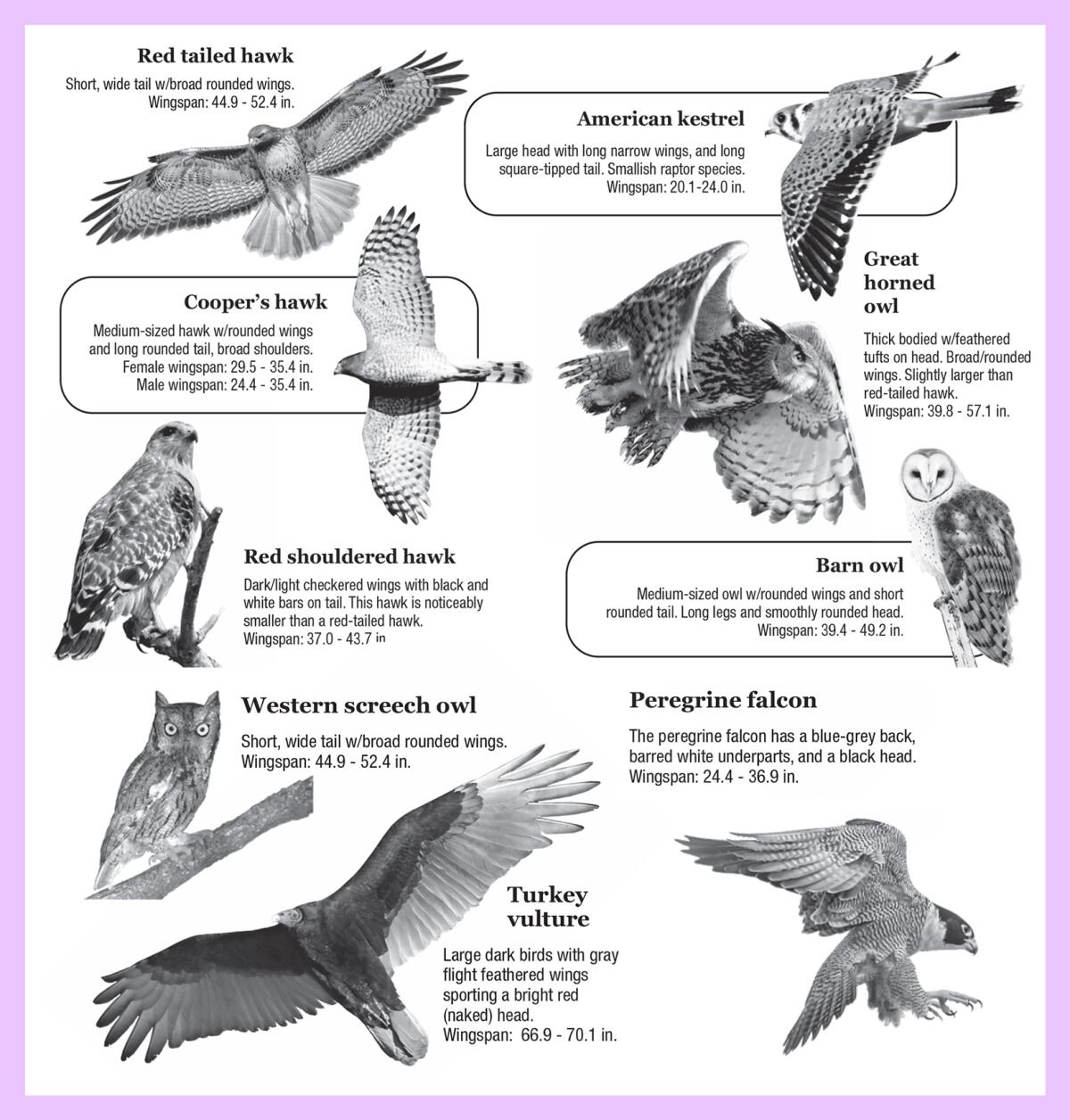
Though she tells me she’s camera-shy, McCammon is a dynamic guide. Her eyes light up and her voice intensifies as she talks about the birds. “When (the female raptor) is incubating, she will sit very low, because the purpose of incubating is to keep the eggs warm,” she says. “For the most part, she’s not moving for Jesus.”
After one Saturday morning with her in Griffith Park, I’m ready to enlist as her full-time bird-watching assistant. I’m not the first to be bitten by the bug: Gerry Hans, president of Friends of Griffith Park, shared that this newsletter’s dear founder, Mary Forgione, was also a Raptor Study volunteer.
McCammon and I gape in awe as a red-tailed hawk swoops across the sky, its wings unfurled in the graceful avian aeronautics that have inspired humans to fly for centuries. A pair of adult red-tailed hawks has built a nest in a very tall redwood, and are flying low, calling to one another. One rests at the top of the redwood, while the other circles in a potential courtship behavior. “Gifts of food are part of courtship,” McCammon says, “and the male will engage in aerial displays, flying high in the air and diving down rapidly.”
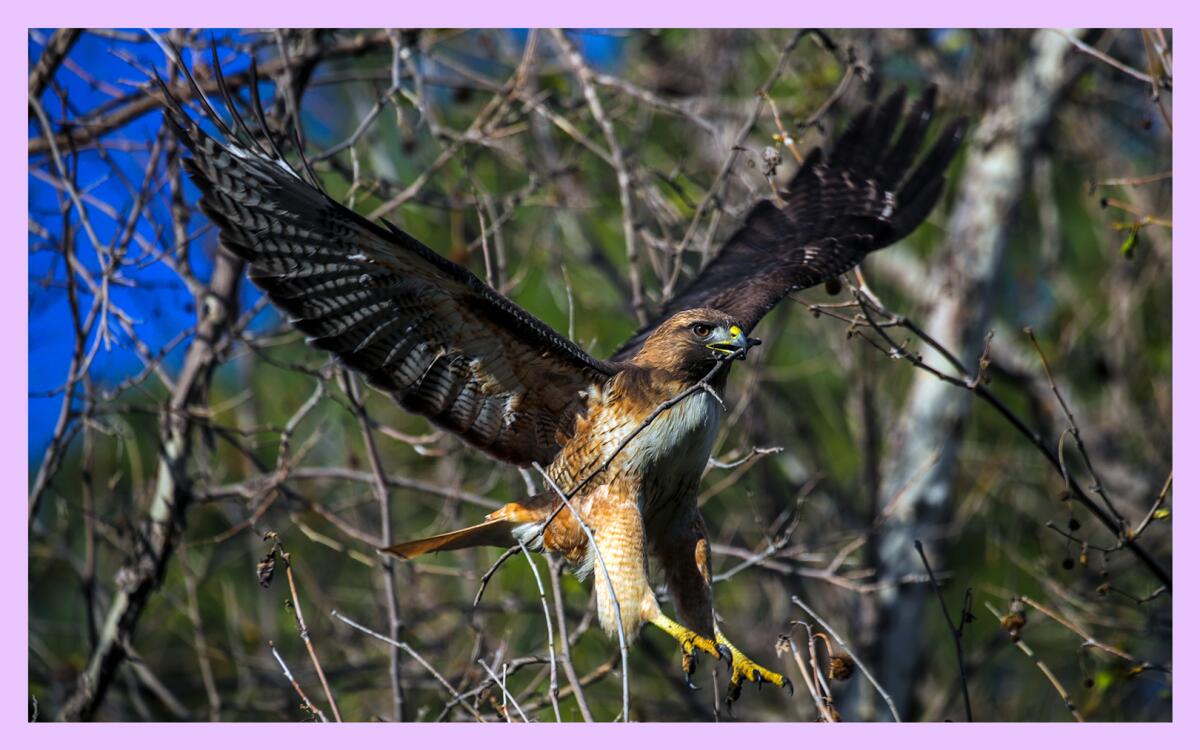
And what is this romantic feast? The agile, comparatively small Cooper’s hawk can acrobatically swoop and catch small birds, while a red-tailed hawk may catch a larger bird like a scrub jay, but being “a little bit more clunky and big,” according to McCammon, is more likely to go for rabbits, striped skunks, ground squirrels, gophers, snakes and lizards — all of which they can find in their home territory of Griffith Park. Their main threat? Us, from our house windows, which they’re at danger of colliding with; vehicle collisions; habitat destruction; or rodenticides. (By the way, it’s illegal to remove any raptor nest by tree-trimming or any other means, whether it’s inhabited or not. Call CALTIP to report illegal trimming.)
Just then, we’re blessed with the appearance of another commonly seen Los Angeles raptor, McCammon’s favorite: the red-shouldered hawk. “I really do love them because they are so tough and mysterious,” she says. “You really have to try to find them. I mean, turn off your phone, dial in to the pair, be patient and hopefully be rewarded by finding their nest.”
We wait a few minutes and spy one soaring down from a utility pole to land on a tree branch, its orangey-red shoulders on display as it unfurls its wings.

As we take in the birds, McCammon and I discuss why it’s important to keep an eye out for raptors, what volunteers with the program do and how people can get involved. Since we walked together a few weeks ago, a few red-tails have laid eggs and are now incubating, and one of the great horned owls now has chicks. The other great horned owls are incubating, with chicks expected in a few weeks, so bring your binoculars on your next Griffith Park hike.
I was surprised at how invested I became in the birds we just saw. Why should people pay attention to the avian life around them?
Being aware can enhance a hiker’s experience by connecting them more with nature. Bird watching is a very peaceful activity, and it can take one’s mind away from the stressors of the world. It’s something you can do in your own backyard, and the bird watching contingent in L.A. is so huge and very passionate.
Your volunteers are also passionate about their work, recent rain or cold be damned. What do they do out there?
In late January and early February, Dan [Cooper, fellow biologist and director of the study] and I train them in nest-searching, and in March, they’re deployed to monitor their assigned nests. If new nests are located, they record data on the tree species, topography and GPS coordinates. From April to June, they continue to monitor nesting activity stages, such as egg incubation, chicks and finally, fledging, because birds leave the nest by the end of June. In the summer, from July to August, we celebrate with a volunteer party and then do our data analysis and results presentation. [Watch last year’s presentation here.] Volunteers really, truly connect with their pair of birds, and it’s really cool.
What trends have you seen since you started the raptor study in 2017?
The study is still too young to make big assumptions on population trends, and we haven’t had enough years post-pandemic to really tease out the trends that came from it. For example, we thought the red-tailed hawk was the most common hawk in Los Angeles, but just last year, the Cooper’s hawk — a very urban hawk that’s so good at utilizing urban spaces — far surpassed the red-tailed hawk.
Where can we see peregrine falcons in L.A.?
They like to nest in rock cavities, rocky outcroppings, and we have a nesting pair here in Griffith Park, which is really special; we think it came out of COVID and the lack of activity. Now that people are back out in the world, we’ll just have to wait and see what happens. That peregrine falcon pair is a great example of what happens when you leave the space alone, because they came in, they nested and they’re successful — they had four chicks last year. We’ve also been told there’s a pair living by the Burbank Hotel, a pair in Long Beach and a pair in Pasadena.
Is there anything the average Angeleno can do to help support the raptor study?
A big part of how we find nests we might never have found, because they’re on private property, is from people saying, “I have a hawk in my backyard.” Hawks are in Silver Lake; they nest in Echo Park and Eagle Rock. Mount Washington is chock-full of hawks. Our outreach coordinator, Nurit Katz, is on all the social media platforms and gets tips all the time, and even has a little flyer that says, “Have a hawk tip?” We love any tips you can give us on any area within our study, and we graciously check up on every single tip, even though there are only four of us.
Register on Eventbrite to attend McCammon’s walks on March 18 or March 20. To take a self-guided walk, park at the Griffith Park Visitor Center at 4730 Crystal Springs Drive, and look around Fern Canyon, hiking along the Lower Beacon Trail and past the Griffith Park Golf Course, where we saw red-tailed hawks in the redwoods. To sign up to be a volunteer next year, subscribe to the Friends of Griffith Park newsletter. To report a raptor nest, contact Katz at raptors@friendsofgriffithpark.org, or call or text (818) 384-9493.
3 things to do
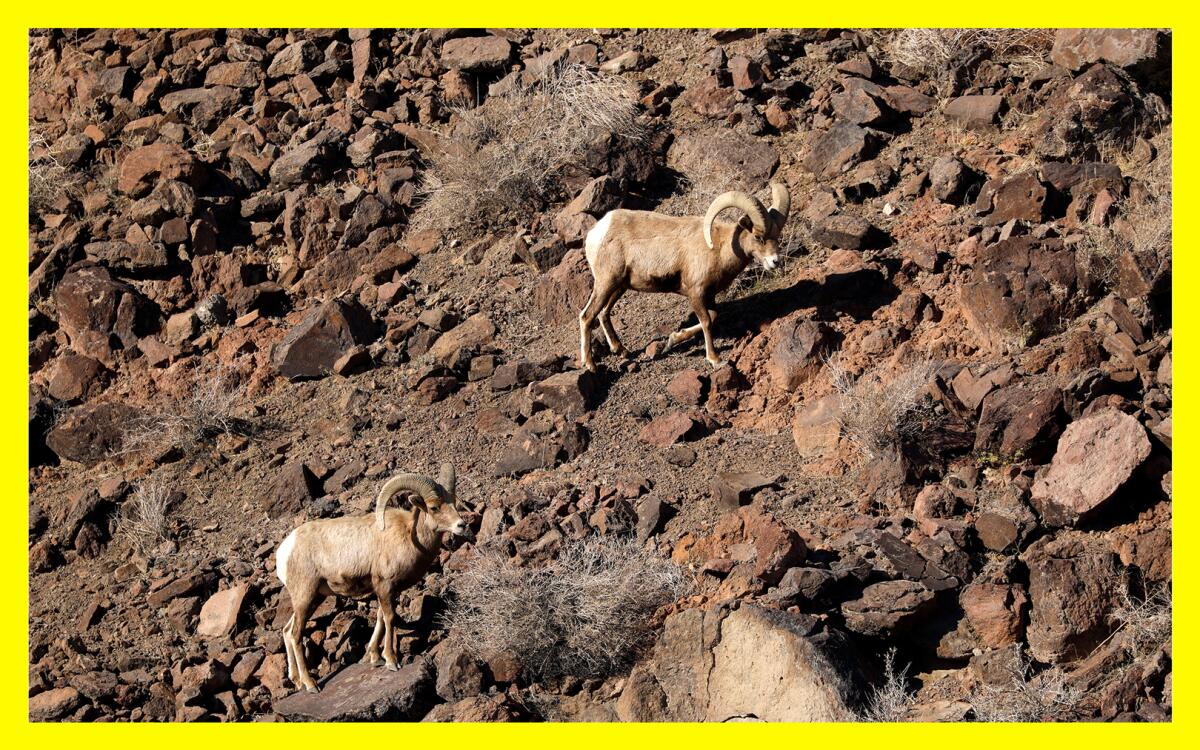
1. Make like Little Bo-Peep and count the sheep. With the construction of a high-speed rail between L.A. and Vegas, the California Department of Fish and Wildlife is building three wildlife crossings to protect bighorn sheep from 180-mile-per-hour trains. And on March 19, CDFW will start its survey of bighorn sheep in the Angeles and San Bernardino national forests, which it’s been doing every year since 1979. The amount of experience needed: zero. All you need to do is pre-register and attend a mandatory virtual orientation through Microsoft Teams on March 18 at 6 p.m. You’ll learn how to classify wild bighorn sheep, what gear to bring and what conditions to expect on the trails. Email bighornsheepsurvey@wildlife.ca.gov with any questions.
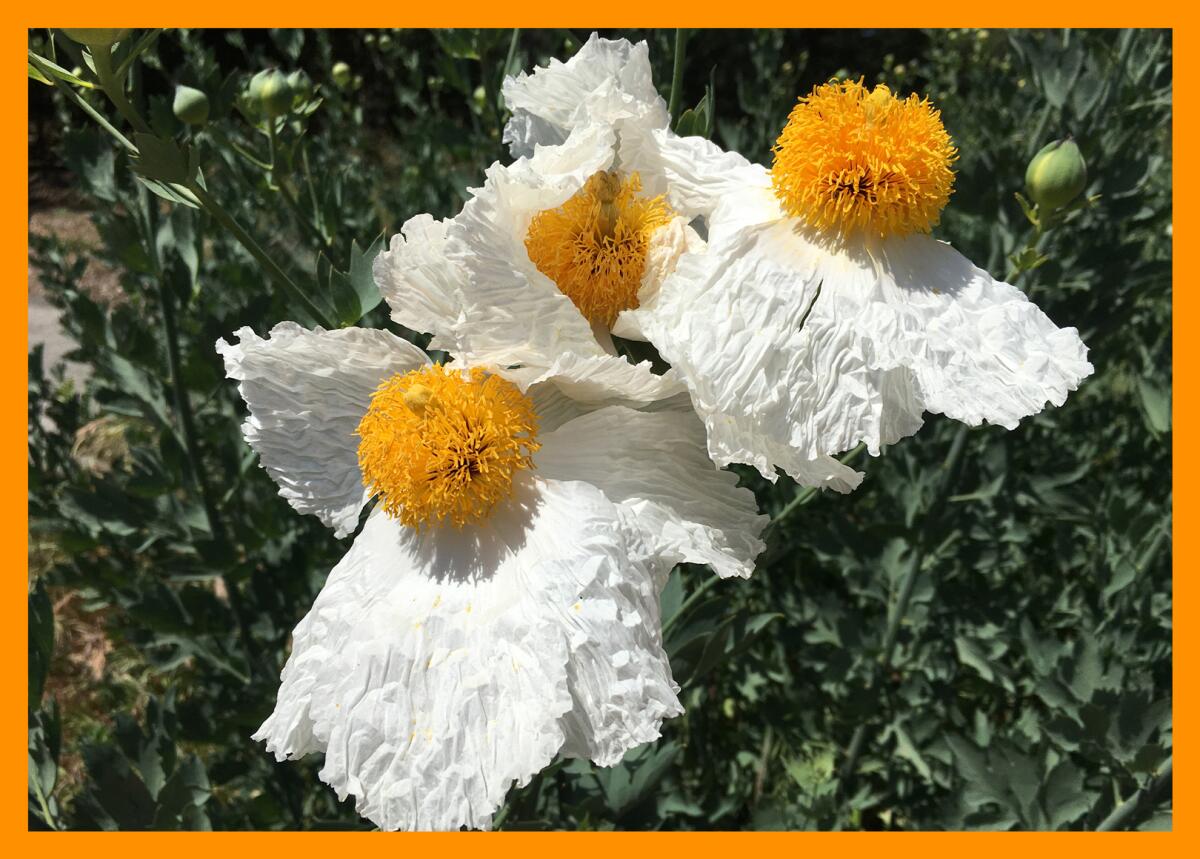
2. Festoon your house with pretty native plants. Plant photographer and gardener Cynthia Gingerich hosts this online tutorial on arranging her favorite native plants into wreaths, garlands and bouquets. Though she’s in the Santa Cruz Mountains, you’ll find many of her favorites, like Matilija poppies, are common to our area. Gingerich will demonstrate how to use flowers, foliage, branches and seed pods to create a variety of natives-only arrangements and share how she converted her yard to a completely native landscape. Register here for the tutorial on March 13 from 7 to 8:30 p.m.

3. I spy with my little eye … a wild assortment of birds in an urban park. On second Saturdays, the San Fernando Valley Audubon Society shows off the gorgeous Sepulveda Basin birds, lizards and turtles, whose populations have thankfully recovered from the September 2020 fire. Here’s a checklist of a few of the other gorgeous beings you might happen upon in the park, including western bluebirds, lesser goldfinches, green herons and American white pelicans. Tours are free and perfectly suited to families with school-aged kids and beginning birdwatchers. No RSVP is required; find more info here. The next tour is March 11 from 9 to 10:30 a.m.
The must-read
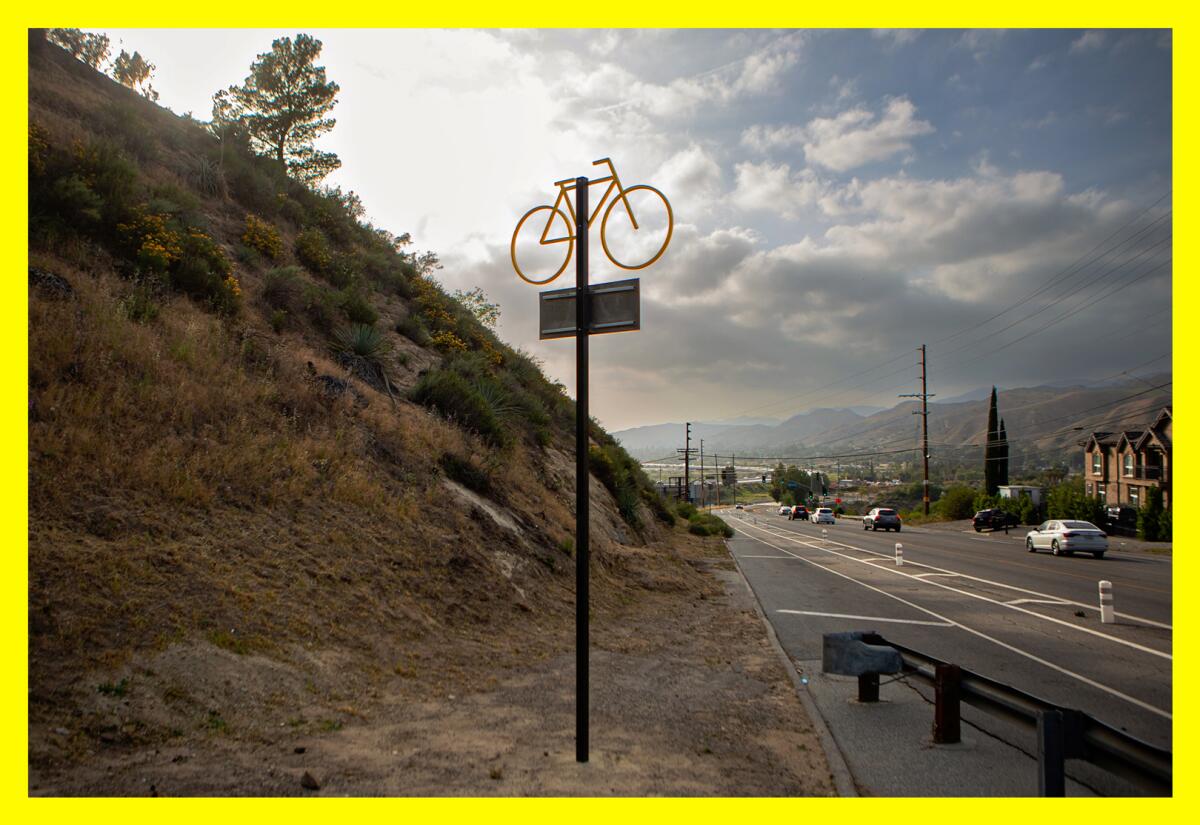
Content warning: violence is mentioned in this section.
If you’ve road-biked Los Angeles, you know how hostile drivers can be (unless you’re doing it during CicLAvia, when you’re cruising down a car-free street shut down for the event). Lately, violence against cyclists is occurring even in the bike-friendly Bay Area. And on Feb. 1 in Dana Point, cyclist Dr. Michael John Mammone was hit by a car, then stabbed and killed by its driver — seemingly randomly.
Groups like Streets Are for Everyone are leading protests on the steps of City Hall to call attention to a record number of traffic deaths and issuing reports on the record number of traffic fatalities last year. But until our government allocates the staffing, resources and funding to really implement Former Mayor Garcetti’s Vision Zero, white ghost bikes will continue to dot our city’s worst intersections.
A more bike-friendly city and stronger enforcement are possible. In a worthy example, one seven-mile stretch of Pacific Coast Highway north of Malibu is getting a redesign to protect its cyclists. Call me wild, but I can imagine a bike-friendly Los Angeles someday, maybe not by Garcetti’s hoped-for 2025, but even in 10 to 20 years.
Happy (and safe) adventuring,

Check out “The Times” podcast for essential news and more.
These days, waking up to current events can be, well, daunting. If you’re seeking a more balanced news diet, “The Times” podcast is for you. Gustavo Arellano, along with a diverse set of reporters from the award-winning L.A. Times newsroom, delivers the most interesting stories from the Los Angeles Times every Monday, Wednesday and Friday. Listen and subscribe wherever you get your podcasts.
P.S.
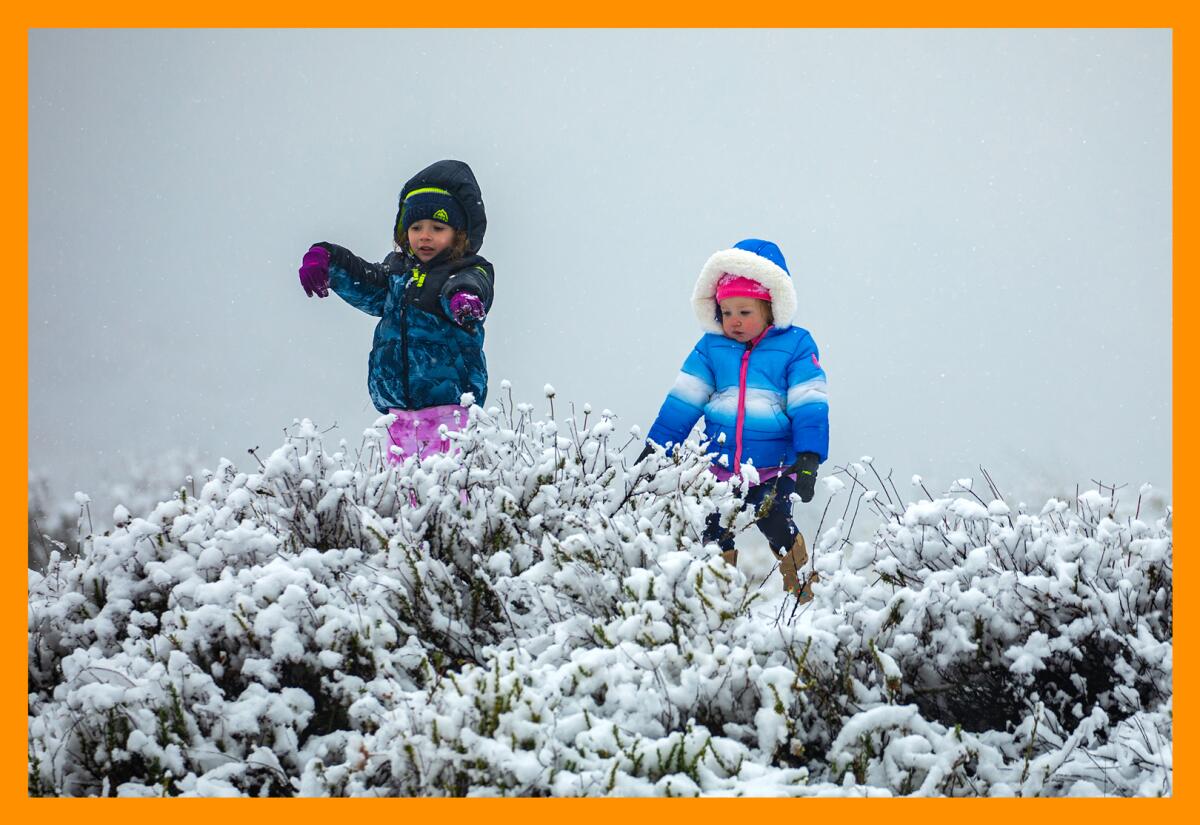
If our unusually frosty temps have you scrambling for warm clothes, try an army-navy surplus store. They’re a bit easier on the wallet when buying something new you can’t find used, and there are several across our city. The most well-known might be the Surplus Store near Culver City. There’s also the Supply Sergeant, with spots in Hollywood and Burbank, and Doughboys Surplus in Bellflower. And if you’re looking for warm kids’ clothes, I highly recommend two indie resale shops I frequent: Dakota + Rowan in Sierra Madre (they sell on their Instagram stories and ship to you) and the Green Bean in Eagle Rock.
For more insider tips on Southern California’s beaches, trails and parks, check out past editions of The Wild. And to view this newsletter in your browser, click here.
Sign up for The Wild
We’ll help you find the best places to hike, bike and run, as well as the perfect silent spots for meditation and yoga.
You may occasionally receive promotional content from the Los Angeles Times.




